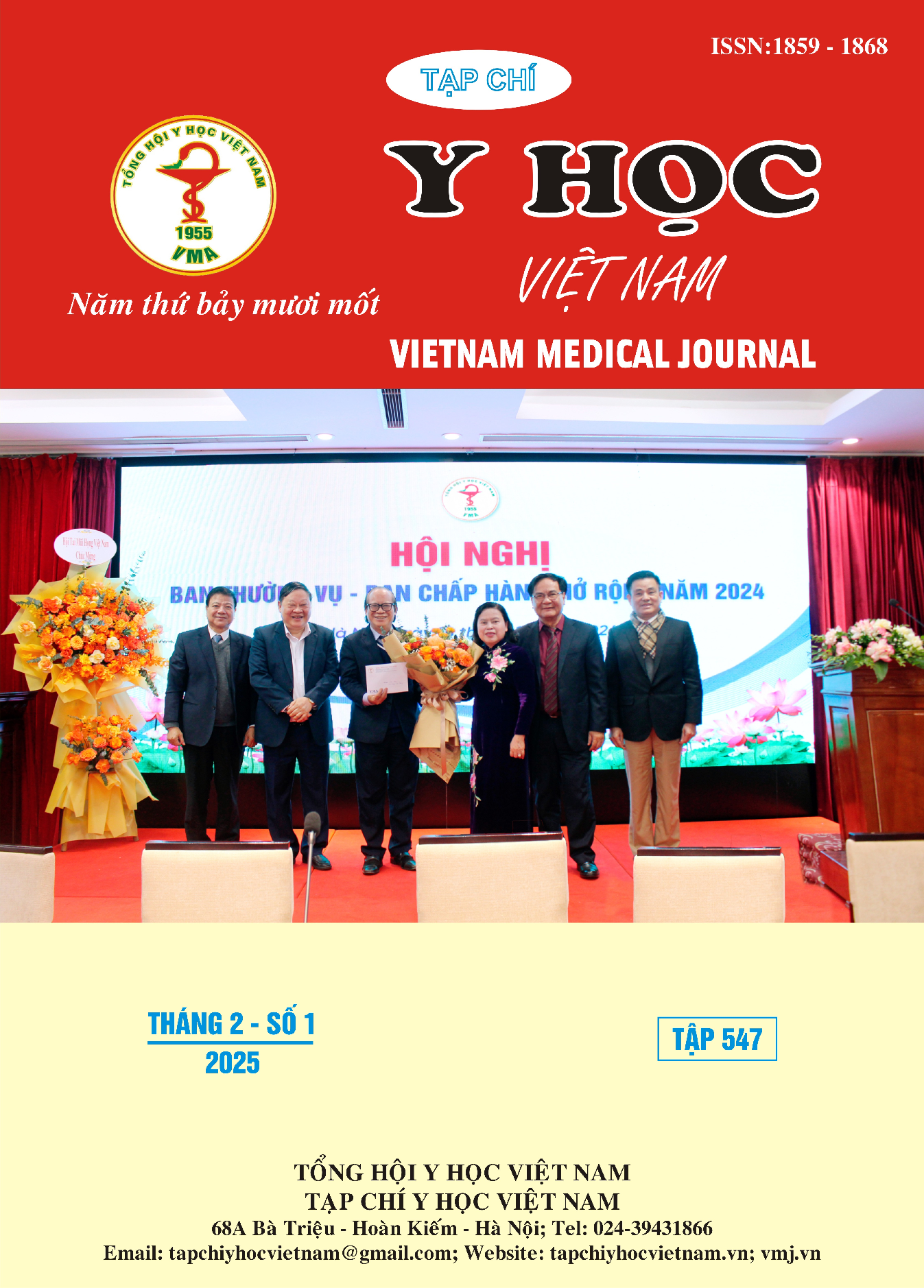STUDYING DEEP VEIN THROMBOSIS IN ACUTE MEDICAL INPATIENTS
Main Article Content
Abstract
Background: Deep vein thrombosis (DVT) is frequent clinical problem in acute medical inpatients, clinical symptoms atypical, association with risk factors. Objectives: Studying the clinical and paraclinical characteristics of deep vein thrombosis and risk factors for DVT in acute medical diseases. Methods: A descriptive study was performed in Hải Dương Province General Hospital between August 2023 and August 2024. Results: The majority of cases of deep vein thrombosis in acute medical inpatients is asymptomatic. A positive Homans's sign is the most common clinical syntoms of symptomatic deep vein thrombosis. Location of thrombi: 62,5% of thrombi was at proximal, thrombi at the root of valve accounted for 76,8%, most of deep vein thrombosis was blocked incompletely (82,1%). The immobility, congestive heart failure NYHA IV, respiratory failure was associated with DVT in acute medical diseases with OR: 5,2; (95%CI: 1,2–8,9); OR: 2,3; (95%CI: 1,2–5,4); OR: 3,5; (95%CI: 2,3 –5,9). Conclusion: The majority of cases of deep vein thrombosis in acute medical inpatients is asymptomatic. A positive Homans's sign is the most common clinical syntoms of symptomatic deep vein thrombosis. The characteristic of deep vein thrombosis was common in proximal and blocked incompletely. The immobility, congestive heart failure NYHA IV, respiratory failure was associated with DVT in acute medical inpatients.
Article Details
Keywords
Deep vein thrombosis, DVT, Risk factors
References
2. Lutsey PL, Zakai NA (2023). Epidemiology and prevention of venous thromboembolism. Nat Rev Cardiol; 20(4):248-262.
3. Raskob GE, Spyropoulos AC, Cohen AT, et al (2021). Association Between Asymptomatic Proximal Deep Vein Thrombosis and Mortality in Acutely Ill Medical Patients. Journal of the American Heart Association;10(5)
4. Đặng Vạn Phước, Phạm Gia Khải, Nguyễn Lân Việt, Nguyễn Văn Trí, Đinh Thị Thu Hương (2010). Huyết khối tĩnh mạch sâu: Chẩn đoán bằng siêu âm Duplex trên bệnh nhân nội khoa nhập viện, Tạp chí Tim mạch học Việt Nam, Số 55 Tr.24-36
5. Nguyễn Văn Trí (2016). Khảo sát huyết khối tĩnh mạch sâu chi dưới không triệu chứng trên bệnh nhân nhồi máu não nằm viện, Tạp chí Tim mạch học, Hội Tim mạch học thành phố Hồ Chí Minh.
6. Teruel SY, Oviedo JC, Fuciños LC, et al (2012). Proximal and distal deep venous thrombosis in critically ill patients: incidence and prevalence. Critical Care;16(Suppl 1):P418
7. Kearon C, Julian JA, Newman TE, Ginsberg JS (1998). Noninvasive diagnosis of deep venous thrombosis. In: Database of Abstracts of Reviews of Effects (DARE): Quality-Assessed Reviews, Centre for Reviews and Dissemination
8. Sartori M, Favaretto E, Cosmi B (2021). Relevance of immobility as a risk factor for symptomatic proximal and isolated distal deep vein thrombosis in acutely ill medical inpatients. Vasc Med;26(5):542-548.
9. Zhu R, Hu Y, Tang L (2017). Reduced cardiac function and risk of venous thromboembolism in Asian countries. Thrombosis Journal;15(1):12.
10. Børvik T, Brækkan SK, Enga K (2016). COPD and risk of venous thromboembolism and mortality in a general population. European Respiratory Journal;47(2):473-481.


